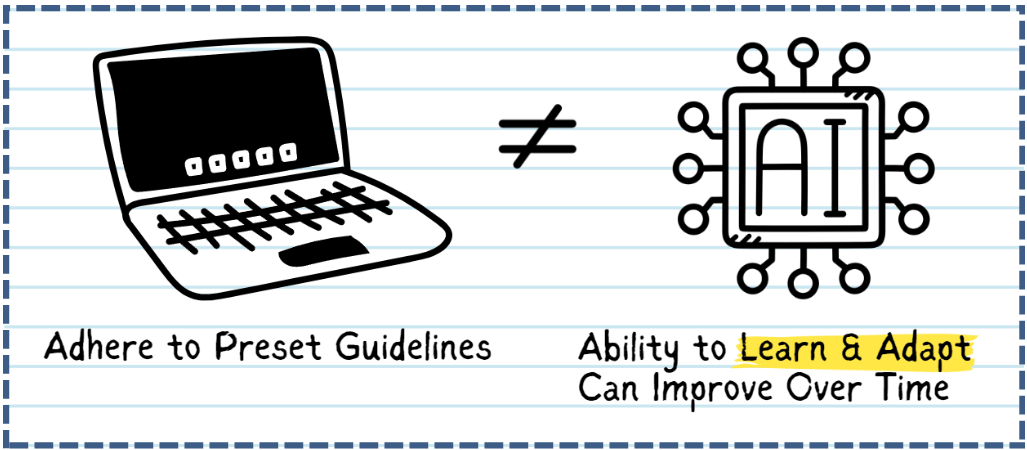What is a BYOD policy, and should your arts organization invest in one? AMT Lab Contributor Yingchong Wang weighs the benefits and risks.
Ticket Scalping Today: Assessing the Challenge
Reselling tickets at prices above face value on the secondary market, otherwise known as ticket scalping, is a common practice in the United States. But how has the internet and advancing technology empowered scalpers at the expense of arts organizations? AMT Lab Contributor Katie Grennan investigates.
Selling Online: An Abridged History of E-Commerce
When you need a book, you no longer jump in a car and drive to a bookstore. Instead, with just a few clicks on the computer, your book will be waiting at your front door in two days or instantly online. E-Commerce has become a natural and regular part of people’s lives, and nonprofits should evaluate this trend when managing their revenue sources.
How Technology Can Support Artistic Collaborations
As technology continues to shrink the world we live in by bridging communities across the globe, collaborations between artists separated by space are becoming more common. In this white paper, AMT Lab contributor Nora Fleury looks at the ways new technologies are influencing this increased collaboration. With a specific focus on team communication applications and cloud-based document sharing systems, this is a useful resource for managers struggling to foster communication between artists separated by geography. Click here for the full report.
#TBT: A Guide to Web-Based Fundraising and Philanthropy
Web 2.0 has changed many aspects of the modern world, and fundraising and philanthropy is no exception. From the tidal wave of tech tycoons committing to the Giving Pledge to the rise of crowdfunding (and a bevy of potential platforms for a crowdfunder to choose from), soliciting essential funds has more avenues than ever--and more potential challenges along with them. This week's throwback rounds up numerous articles that provide time-tested wisdom on how to navigate in the new world of web-based fundraising and philanthropy.
#TBT: A Toolkit For Workflow Management
In most cases, an organization’s efficacy is only as strong as its internal cohesiveness. But how do we create this environment? There are many technological tools available that are designed to ease organizational communication and workflow management, and through the years AMT Lab has written product reviews and articles featuring several of them. This week’s TBT is a toolkit for managers thinking about implementing new communication or workflow processes, or even reviewing their existing processes to see whether they have the best tools for their projects.
#TBT: An Organizational Guide for Adjusting to New Technology
While many idealize the implementation of technology into organizational practices, those who have attempted to do so know firsthand that there are many challenges involved--many of which have less to do with the technology itself, and more to do with the human process of adjusting to it. Over the years, several AMT Lab articles have covered different aspects of this adjustment, and today’s throwback gathers them together to create a handy organizational guide to adjusting to technology.
How Socially Responsible Spending is Replacing Traditional Philanthropy
You would be hard pressed to find any person who has visited a grocery store or movie theater that has not been asked to donate an additional dollar for charity on top of their purchase. It’s become a widely accepted, near expected, practice in contemporary consumer culture. Capitalizing on existing buyer behavior is not just easy- it’s smart. However, the model has advanced far beyond adding a few dollars onto a popcorn purchase at the cinema. It has emerged as a way for organizations to capture financially strapped young donors, and generate creative revenue streams as traditional philanthropic avenues face increased competition.
#TBT: The Arts Manager's Toolkit for Data Management
Here at AMT Lab, we have been sorting through plenty of data as we prepare for tomorrow’s release of the full report from our 2015 National Ticketing Survey (stay tuned!). Today’s throwback is a collection of AMT Lab Articles that discuss tools, stories and best practices for the management and usage of quantitative data in an arts organization. Most of these are a more recent throwback, but even those articles from 2012 still provide invaluable resources for organizational leaders.
Research Update 2: How Technology Can Support Artistic Collaborations
Introducing new technology into a tried and true process is an experiment— as such it comes with risk. However, if we leave our comfort zone, think critically about the strengths and weaknesses of our processes as they currently exist, and entertain how technology could allow for deeper and more efficient collaboration, we may find new opportunities for innovation in this vital area. The Oregon Shakespeare Festival (OSF) did exactly that to remarkable success.
The Giving Pledge: A Start to Engage Tech Philanthropy
To understand why arts organizations have struggled to capture funds from tech billionaires, arts managers and development professionals would do well to recognize what philanthropic sectors they are losing these dollars to, and why. Armed with these insights, arts professionals can then adjust their strategies to better appeal to this new and growing donor segment.
Silicon Struggle: The Battle for The Bay Area Arts' Scene
If you told the average San Francisco resident 40 years ago that the art scene in the Bay Area would be gasping for life in 2015, they probably would have laughed in your face. But it is 2015, and that is the reality we are facing. The tech giants have moved in, and tension is building between the Silicon Valley community and its non-profit entities. In particular, arts organizations seem to be at an extreme disadvantage for a few reasons:
Research Update 1: How Technology Supports Collaborative Artistic Projects
Picture a producer preparing for the upcoming world premiere Contemporary Color, “a pep rally pop music mashup.” Conceived by David Byrne and commissioned by Luminato Festival and Brooklyn Academy of Music, Contemporary Color will bring together artists such as Nelly Furtado, St. Vincent, and Ira Glass, 350 performers, and a 15 piece band for its world-premiere performance in Toronto this summer. Not only are the artists, performers, and musicians all located in different cities across North America, great distances also separate the designers, technicians, and other producers. To coordinate the project across these distances, the producer relies on online collaborative tools to orchestrate the project from pre-production to post-production.
How Museums Are Dealing With New Media Art: Part 1
When talking about new media art, there is no single definition. According to a 2001 research study by the Rockefeller Foundation, media artworks can be defined according to nine common elements: fluidity, intangibility, liveness, variability, replicability, connectivity, interactivity, computability, and chance. New media art is a very general and broad category and includes many subcategories. Among these, net art, digital art and plurimedia art are the most common within the visual art field. Nevertheless, the meaning of new media is constantly evolving.
A Case for Using Google Analytics’ Dashboards
Google Analytics dashboards help users efficiently review important metrics and dimensions, like traffic sources or social media shares, quickly generate reporting tools, and create data-friendly cultures through easy sharing and visually storytelling. Learn about how dashboards can not only help managers process website information, but also how they can effectively communicate that information to a broader audience.
Tips for Choosing a Grants Management System: Part 2
Throughout the process of selecting and implementing a grants management system (GMS), an arts organization must consider many factors in order to ensure positive results. These factors fall into four main categories: vendor interviews, data migration, integration, and training. All of equal importance, these categories must be weighed to find the optimum balance of system features and vendor characteristics.
Today we focus on the last two categories—integration and training. To read the first part of this two-part series, click here.
Tips for Choosing a Grants Management System: Part 1
Throughout the process of selecting and implementing a grants management system (GMS), an arts organization must consider many factors in order to ensure positive results. These factors fall into four main categories: vendor interviews, data migration, integration, and training. All of equal importance, these categories must be weighed to find the optimum balance of system features and vendor characteristics.
Today we focus on the first two categories—vendor interviews and data migration.
The Importance of Change Management
When implementing new technology, such as a new CRM system, many organizations have learned the basics of how to select a product or vendor. But what about after the technology is selected? It can be overwhelming to consider the unpredictable changes that will occur among the flow or your organization’s work and even among its culture. However, by taking steps to manage the change, new technology can be integrated into an organization much more smoothly.
National Satisfaction with GMS Software
Today, an administrator has the ability to manage the entire granting lifecycle through a grants management system (GMS), including applicant relations, panelist reviews, and fund distributions. Online storage available through cloud computing and software with fewer hardware requirements have increased GMS product capabilities. And the ability for a GMS to interact with other systems, such as payment portals and accounting systems, has further made management of the grant lifecycle within a GMS easier. For many of today’s grant-making organizations, GMS software is an essential tool in day-to-day activities.
Innovation in Hindsight
One of the too-many-hats I wear is that of historian. We can learn so much about the future if we look back (short-term or long-term) and reflect. Trite but true, we are our history. So listening to MIT's Media Lab founder Nicholas Negroponte's Ted Talk was a unique happy moment, as he eloquently reveals how predicting the future comes out of an extension of knowledge of the past.























